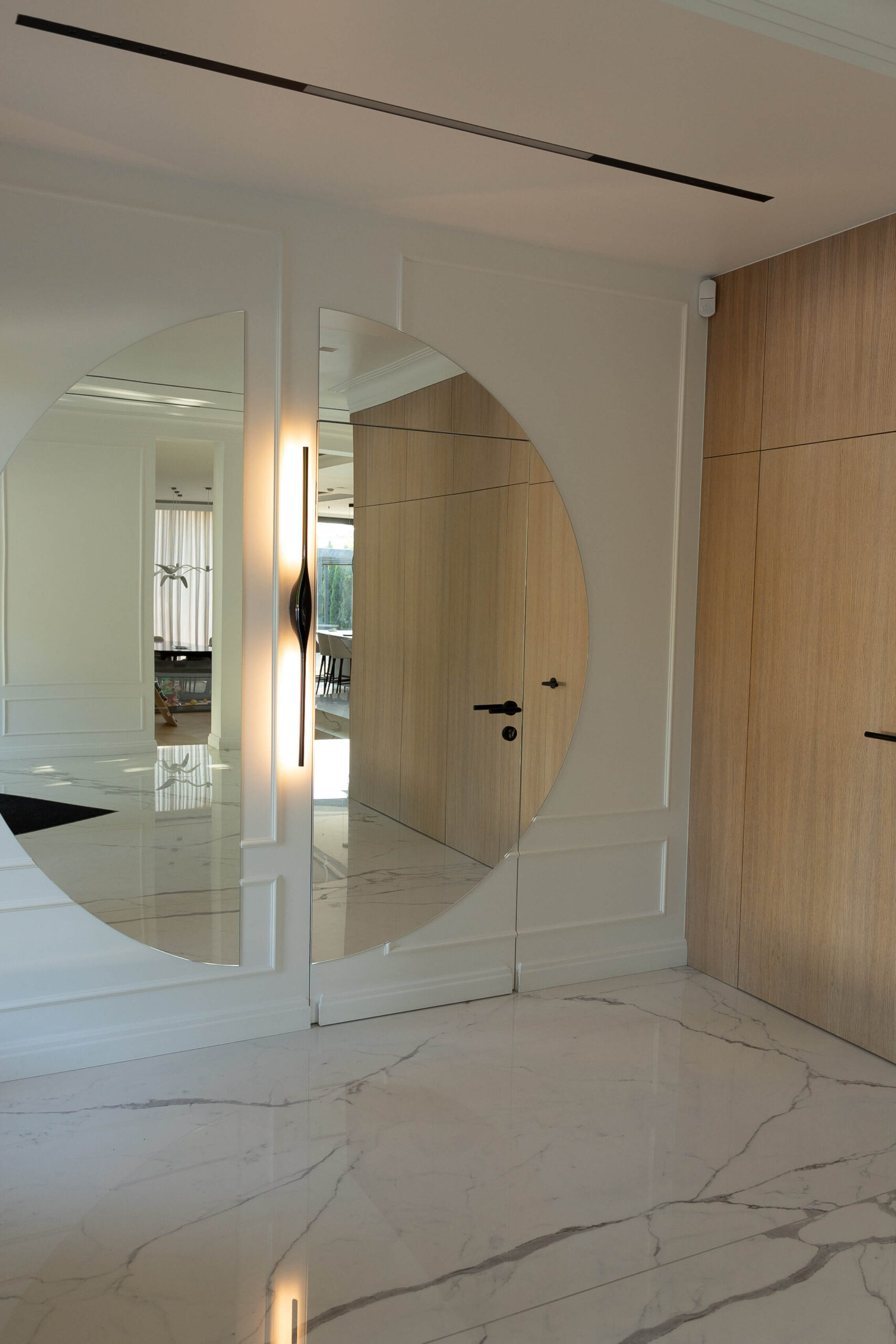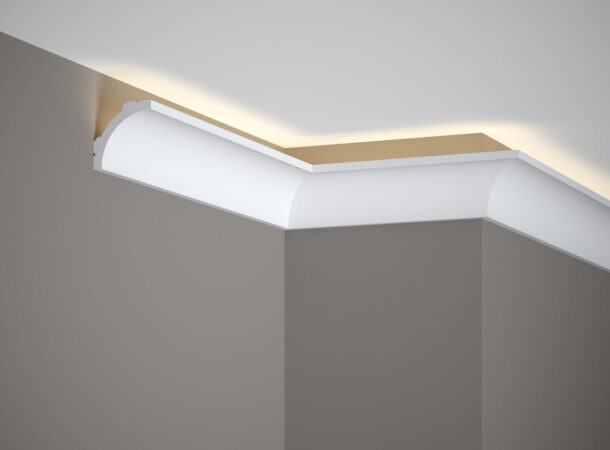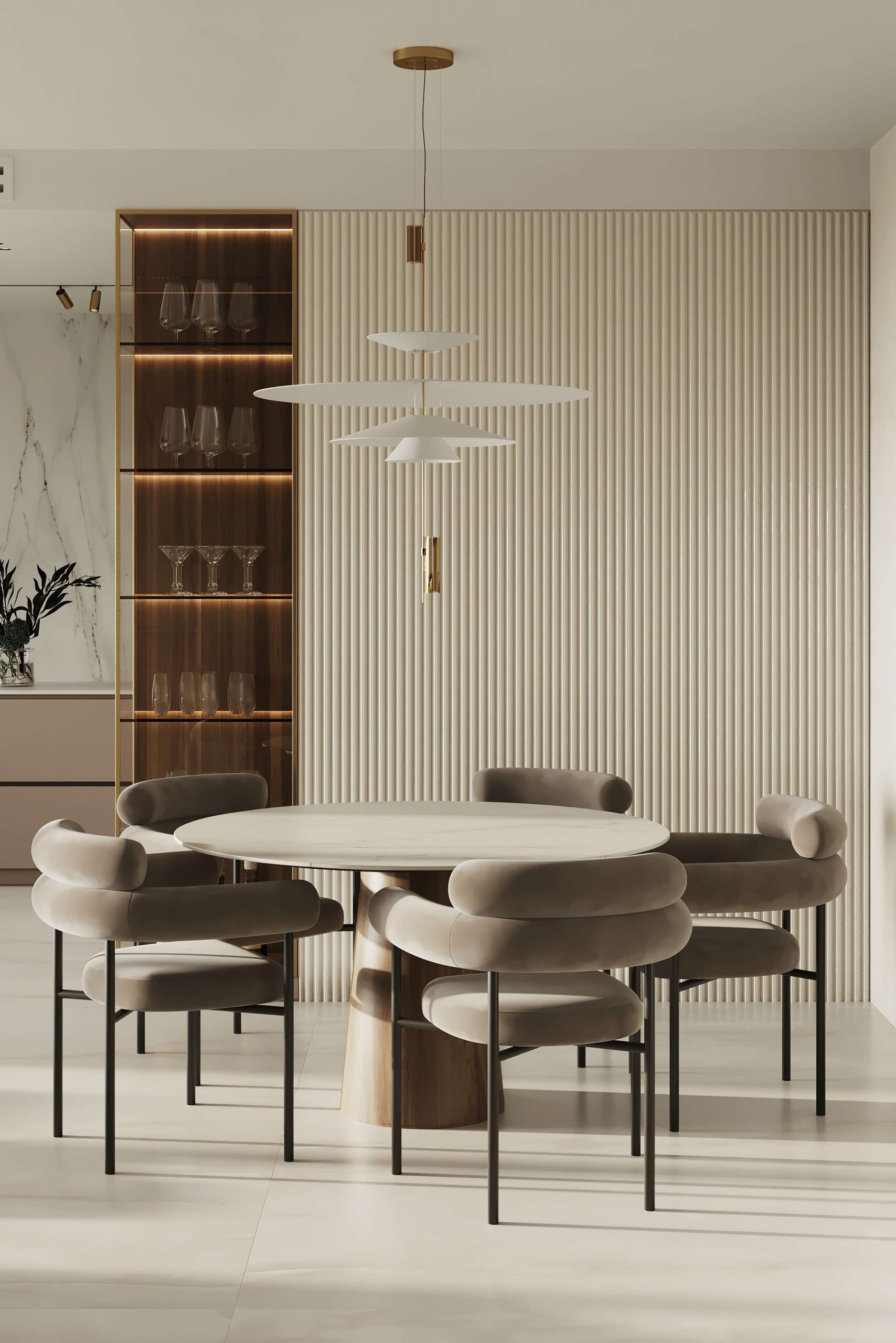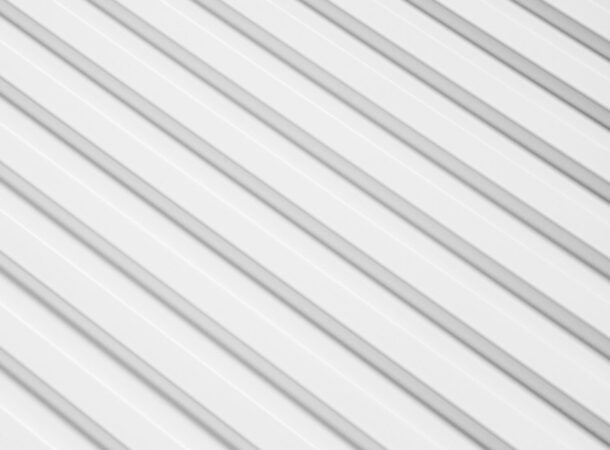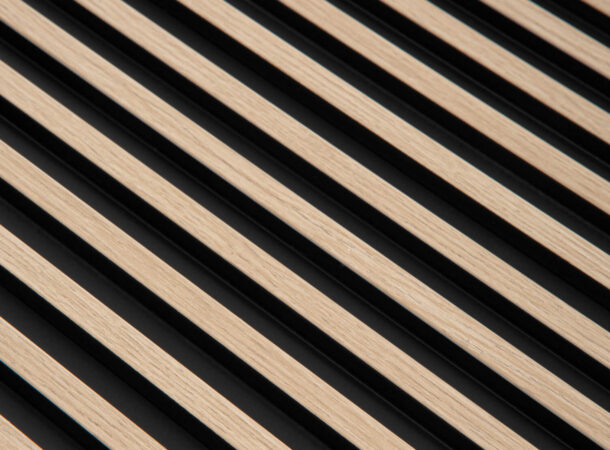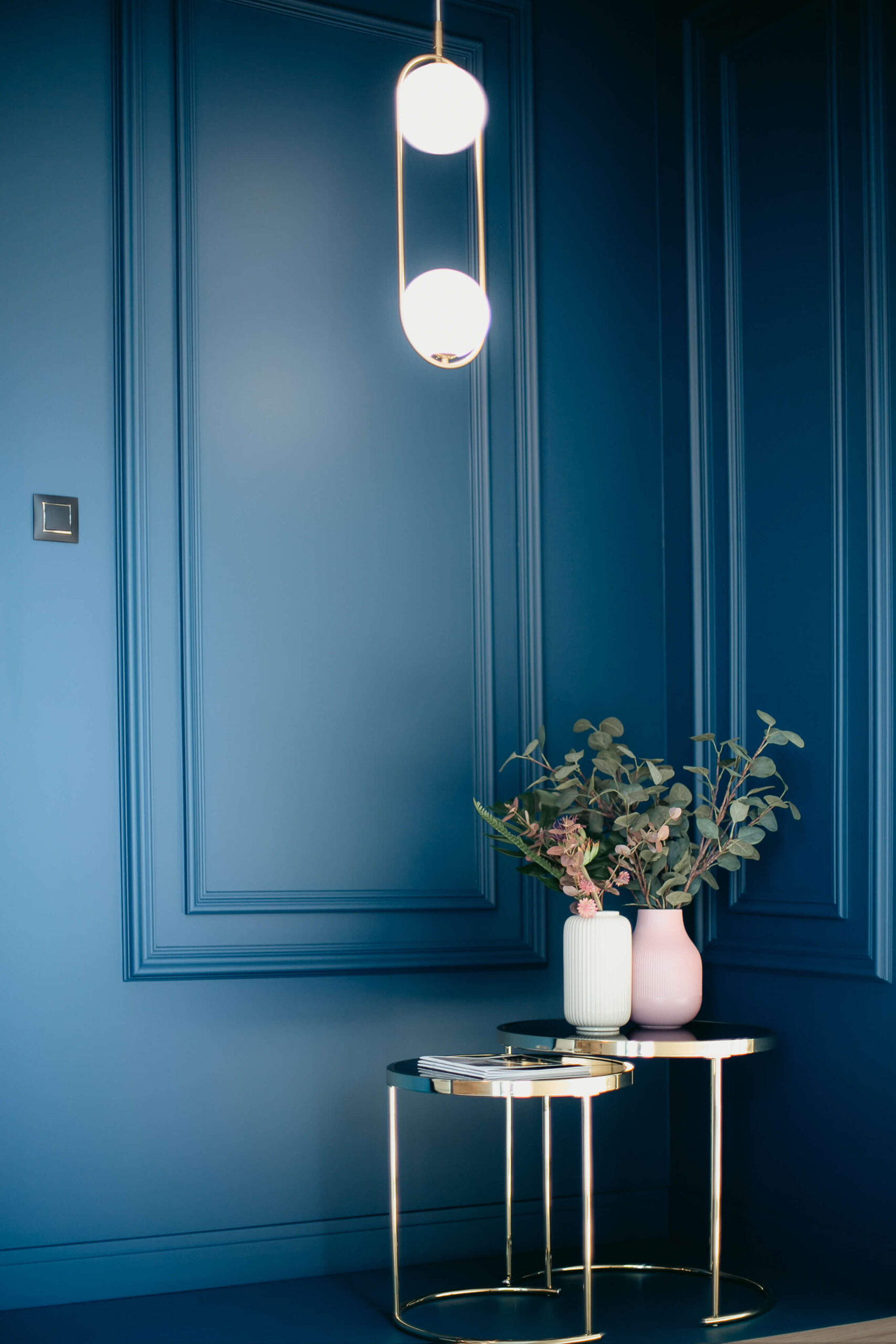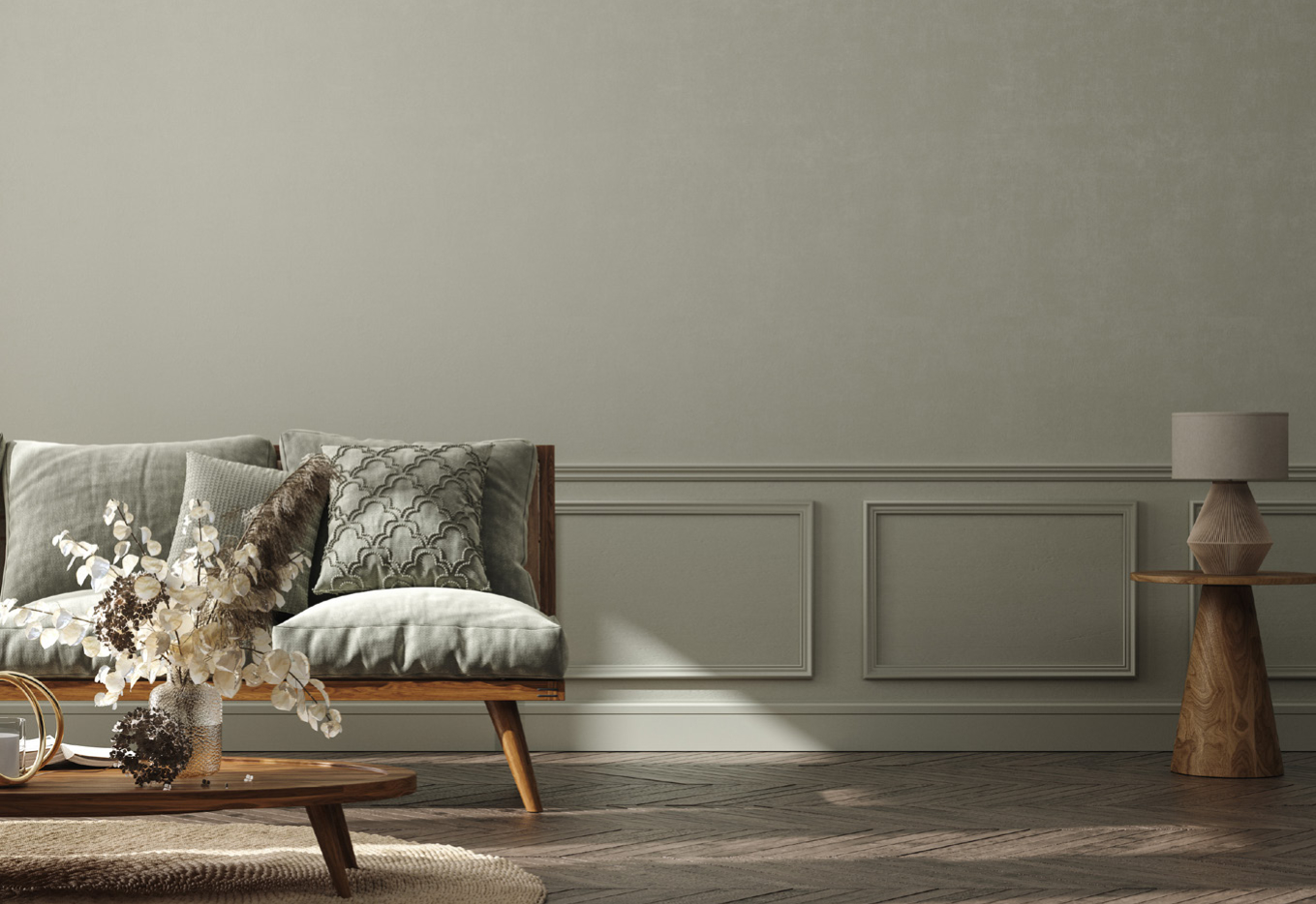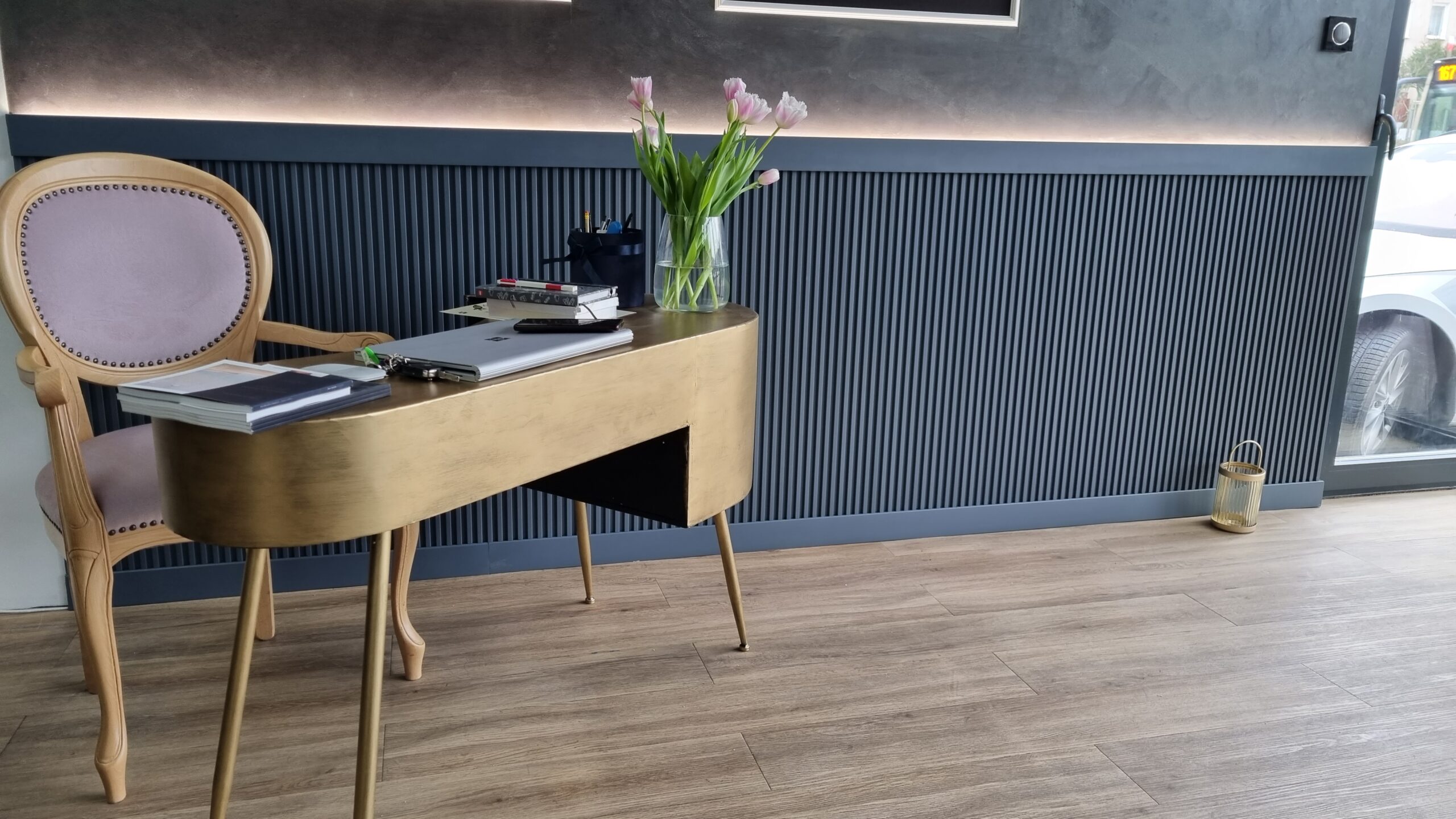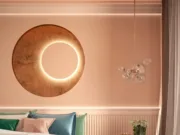Wall stucco and optical enlargement of space: How to create the illusion of a larger room
A large, spacious house with perfect proportions is the dream of most of us. Unfortunately, reality often paints a different picture – our houses or apartments are not always perfect: too low, too narrow or asymmetrical. These limitations, however, are nothing that cannot be visually corrected. Modern interior decoration methods offer a number of solutions that can cover up architectural imperfections. One such solution that deserves special attention is wall stucco – a decorative element that has been beautifying interiors for centuries, adding character and elegance to them.
Wall stucco is not only a testimony to the aesthetic taste of its owners, but also a practical tool in the optical modeling of space. Combined with properly selected colors, patterns, wallpapers and accessories, we can “deceive the eye” and make our interiors seem larger, taller or brighter.
Interior stucco: Optical tricks to achieve a three-dimensional effect
The optical change in the proportions of space is not reserved only for private houses and apartments. In fact, the same universal methods can be used in both residential and public buildings, guaranteeing an excellent visual effect. They can be used separately or combined to maximize the desired effect and make the interior look spacious. This approach to interior design allows for thoughtful correction of architectural imperfections and optical change of the proportions of the room.
The first, and perhaps the most obvious, aspect that influences the perception and appearance of the interior are colors. They influence our well-being and the perception of space. Thoughtful use of colors, their tones and combinations on selected walls can enlarge the room, while improperly selected colors can make the space seem smaller. It is also particularly important to understand the “weight of colors”. Dark, contrasting colors creating diagonal lines are visually heavier and more difficult to use to create an open, large room – it is possible, but definitely more difficult for untrained people. Bright colors, cold shades with delicate contrasts visually enlarge the room. They are easy to combine with each other, creating a coherent and light arrangement. That is why they are often recommended for small rooms.
Another aspect are the leading lines in the room – these are invisible lines in the interior that guide the eye to a specific place, e.g. to the central point, which is the bed in the bedroom. The lines are created by the arrangement of panels (they extend the room towards the window, widen it across) or the way the tiles are installed (small ones with a large number of joints can add coziness to the interior, but can also overwhelm it, multi-format tiles arranged in a circle will emphasize the space, making it more open). . Other ways to create eye-catching lines are wall accessories in the room – paintings, posters, wall shelves or stucco. Thanks to them, you can not only emphasize the character of the room, but also optically modify its proportions.
Raising the ceiling
Low rooms can create a claustrophobic feeling, contributing to discomfort and an unpleasant feeling while staying there. This problem particularly affects the residents of the block of flats – after all, we won’t be able to get through to our upstairs neighbor to raise our ceiling. Despite physical limitations, there are effective arrangement tricks that can optically “raise” the ceiling, creating the illusion of greater spaciousness.
Ceiling and floor mouldings
Skirting boards are a “must have” in every interior where the floor is installed with expansion joints. Ceiling strips are also becoming more and more popular, as they smoothly connect the line of the wall with the ceiling, thus softening the architecture of the room, making it more cozy. But how can white, elegant stucco increase the ceiling height? Who said she had to be white?
Stucco on the ceiling and floor, painted in the same color as the walls, is one of the most useful ways to optically raise the ceiling. This treatment makes the border between the wall and the ceiling less clear, which visually “lifts” it. If you are not a fan of ceiling mouldings, you can always choose one option and paint only the skirting boards (after all, they are necessary in the interior anyway). This will make the wall higher, which will also visually raise the ceiling. When using this method, it is worth choosing stucco designed for painting. Ceiling stucco (and more!) Mardom Decor is available in white, intended for painting. This means that all products have been factory-coated with a matte primer, which allows you to quickly and easily cover the surface in any color.
Another element that has a significant impact on the perception of the height of the room is the appropriate selection of colors. A light ceiling combined with darker walls makes the interior seem higher. Although we often use white ceilings, it is not obligatory. The key is that the color of the ceiling is lighter than the paint on the walls. This solution will visually raise the ceiling, but will also create a feeling of spaciousness and lightness in the room.
Lighting stucco
Optically enlarging the space can also be achieved by minimizing hanging chandeliers and protruding lighting elements, which makes the ceiling appear more even and smooth. This is where lighting strips with LightGuard® technology come in handy, mounted around the perimeter of the room. Thanks to the even dispersion of LED light, the room becomes brighter and the ceiling appears higher. LightGuard® technology prevents the LEDs from unsightly shining through the material, gently scattering the light around the stucco. Thanks to this, the ceiling strip is perfect as the main interior lighting or an atmospheric element.
Minimizing decorative elements on the ceiling and ensuring the consistency of the stucco used are also important elements when visually increasing the ceiling. Modern arrangements often use curtain rods to mask unsightly rails or rods, making the interior look aesthetic and uniform. However, choosing a separate ceiling and curtain rod model may cause problems when installing strips around the perimeter of the room and may not look aesthetically pleasing. In this context, it is worth paying attention to the multifunctional Mardom Decor curtain rod strips, which are designed so that they can be easily mounted both on the curtain rod line and on the wall, thus ensuring a coherent and orderly appearance of the entire room. All Mardom Decor curtain rod strips also have LightGuard® technology.
Optical extension of the room
Thanks to properly selected solutions, we can make our rooms visually larger and more spacious. Colors, patterns, shapes and carefully selected decorative elements allow you to create an optical illusion that can completely change the perception of the interior.
Lamellas and wall panels
Stripes are perfect for visually extending the room. Horizontal stripes are a great solution to visually widen the walls horizontally, making the room seem longer. However, vertical stripes have the ability to optically “lift” the walls, making the interior more spacious. The stripes can be painted with paint or use ready-made solutions and decorative elements, such as wall panels or slats. Not only do they influence the appearance of the interior by masking wall irregularities, but they can also improve acoustic comfort by reducing reverberation and noise.
Moreover, Mardom Decor wall panels and slats are extremely easy to install thanks to the innovative panel form. They look like finishing strips installed next to each other, but the form of the panel allows you to install several rows at once. Vertical ceiling decorations in this form are a much faster way to decorate even large spaces. Additionally, thanks to the simple form of assembly using only glue, they can be installed both vertically, horizontally and diagonally, giving complete freedom in shaping the space.
Wall mouldings
Decorative strips in the shape of classic screens can also help to visually increase the size of the space. Tall, vertical wall frames will visually enlarge the room, at the same time becoming an element of the leading lines we wrote about above. Thanks to them, you can also lead your eyes to the so-called focus point or the most important, distinctive element in the room – in the dining room it can be a table, and in the living room – a sofa. However, placing screens in a horizontal line on the lower part of the walls can have the effect of widening the room.
Another well-known way to modify the dimensions of interiors is the skillful use of colors. Painting opposite walls in darker tones can make the interior visually narrower, while using darker paint on the ceiling and on one of the walls can help extend the appearance of the entire room. However, you need to be careful with the “tram” effect, which can make long and narrow spaces even more claustrophobic. In turn, emphasizing one wall with a bold color or impressive wallpaper can “open up” and visually enlarge the space. You can use a mirror in the same way – mounted across the entire width of the wall, it will reflect light and visually enlarge the room.
Shortening the walls and restoring proportions
In the arrangement process, we often encounter the challenge of restoring proportions in rooms with incorrect dimensions. Appropriate techniques can completely change the perception of a space, making it more harmonious and friendly.
Paneling
To visually shorten a long wall, you can use color division. The lower part of the wall can be covered with a light color, and the upper part with a more saturated and expressive color. This will make the room appear lower and the long walls will appear shorter, which promotes balanced proportions. You can use paneling in the same way – in classic-style interiors made of stucco, and in more modern arrangements made of lamellas or wall panels.
Ceiling and floor strips will also be useful in the process of optically shortening the space, especially in high interiors such as tenement houses, which helps to restore the proper proportions of the room. Tall models of ceiling strips are perfect for such spaces. To enhance the effect of shortening the walls, it is recommended to choose strips in the color of the ceiling, which will optically raise the ceilings and shorten the walls, or choose intense, expressive colors that catch the eye and additionally modify the perception of space. By using these elements, such as stucco paneling, lamellas, wall panels or ceiling strips, you can subtly influence the appearance and proportions of the interior.
Additionally, optical shortening of the walls can be achieved by using appropriately selected ceiling and floor strips. In rooms with high ceilings, typical of old tenement houses, the use of higher models of strips will contribute to balancing the proportions of the interior. The effect of shortening the walls will be even more visible if we choose ceiling and skirting boards in intense, expressive colors.
Summary
To sum up, the appropriate combination of colors, shapes and accessories plays a key role in shaping the proportions and the final appearance of our interior. For those who want to enjoy the results of their work for many years, it is crucial to choose high-quality products. Although Styrofoam stucco may be visually attractive, its soft structure makes it easily deformed. Mardom Decor stands out in this aspect, offering modern stucco made of durable polymer. This material not only guarantees resistance to mechanical damage, but also exceeds traditional Styrofoam decorative strips in terms of durability and aesthetics. Styrofoam strips, although easily available, are not as durable and resistant to water or UV radiation as Mardom Decor stucco. Thanks to the use of advanced materials, our decorative strips become an excellent choice for people looking for durable and aesthetic decorative solutions.

